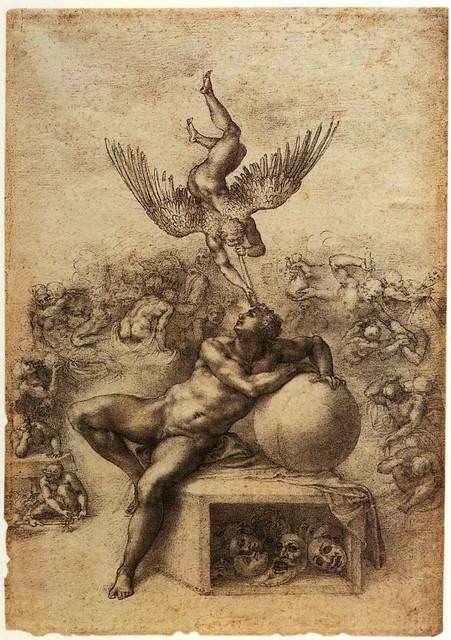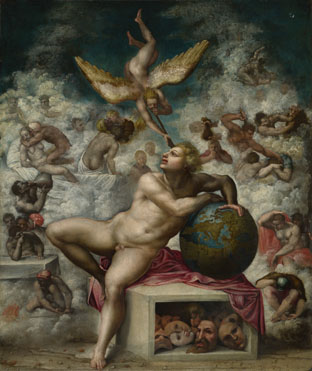2008 (1762)
2009 (1498)
2010 (796)
2011 (759)
2012 (633)
2013 (449)
2014 (575)
2015 (323)
2016 (276)
2017 (470)
2018 (127)
2023 (1)


Michelangelo Buonarroti (1475-1564). The Dream of Human Life, (c. 1533). Black chalk, 39.4 x 27.7 cm. The Courtauld Gallery, London.
‘Drawings the like of which have never been seen…’— Giorgio Vasari, 1568
Michelangelo’s masterpiece The Dream (Il Sogno) has been described as one of the finest of all Renaissance drawings, and it is amongst The Courtauld Gallery’s greatest treasures. Executed in c. 1533 when Michelangelo Buonarroti (1475-1564) was at the height of his career, it exemplifies his unrivalled skill as a draughtsman and his extraordinary powers of invention. Michelangelo’s Dream examines this celebrated work in the context of an exceptional group of closely related drawings by Michelangelo, as well as original letters and poems by the artist and works by his contemporaries.
The Dream
http://www.artdesigncafe.com/Michaelangelo-Buonarroti-Courtauld-2010

The Dream of Human Life
after 1533, After Michelangelo, National Gallery
周末去听米开朗基洛的《 Manchester Madon年a 》却碰到了他的这幅画, 那健美的男子抱着地球,抬头仰望这天使 环绕着他是人类六种原罪(sin) : 他坐在像一个木偶表演的盒子上,这幅画把赤裸的人那些黑暗面暴露无遗。
这幅画是根据 Michelangelo的原作上画的, 和朋友讨论的时候小女儿也凑过来看, 俺故意挡着不让她看, 不想让她这么小就知道人的丑恶的一面
相比之下还是米开朗基洛的素描更美,人和天使有更多对视和交流 无视他周围的同类的暴力和纵欲,美男子面带微笑和信心。
米开朗基洛很高寿, 几乎快九十高龄, 他是艺术家, 他对人有更多透视和了解, 那个年代的艺术大师很多都是全才: 绘画音乐雕塑诗歌数学宗教, 也许也是因为如此, 他们的艺术是那么深刻,几百年过去了, 依然照耀启发着后人。
改日去Coutauld Gallery 去看原作, 不一定摆出来



